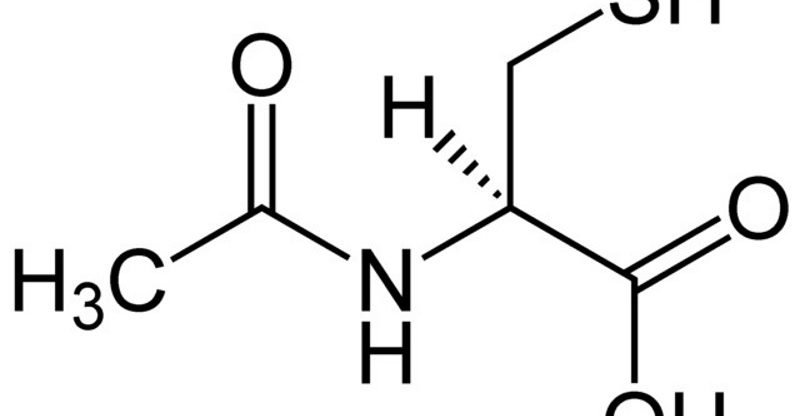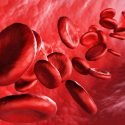25 Science-Backed Benefits of N-Acetyl Cysteine (NAC)
What is N-Acetyl Cysteine?
If you are suffering from certain disorders or dysfunctions, you might be able to benefit from n-acetyl cysteine.
In fact, the amount of research that suggests that this supplement can benefit you or someone you know is simply dizzying.
Moreover, this supplement can even help prevent the onset of potential disorders that you do not have but could develop.
N-acetyl cysteine, or NAC, is a synthetic version of the natural amino acid cysteine that is found in the body.
Originally developed as a way to treat paracetamol overdose, as well as loosen the thick mucus developed by individuals who have various fibrous or pulmonary disorders, recent research into NAC has shown that it can provide a wealth of health benefits that can relieve dysfunction or disorders in a wide variety of tissues and systems in the body.
One consideration to keep in mind is that NAC mimics the function of cysteine, which is an antioxidant.
Oxidants are the byproducts of cellular respiration.
When a cell’s mitochondria break down proteins with oxygen, there is often some remaining waste.
If this waste is not disposed of properly, it may roam throughout the body and damage the DNA or other parts of different cells.
As such, both cysteine and NAC act as antioxidants to help limit the damage that free radical oxidants can cause.
They accomplish this, though, in generally indirect ways.
Rather than attaching themselves to the oxidants, NAC will generally promote the growth of other enzymes of amino acids that will then protect the tissues and cells from the free radical oxidants.
Another of the primary mechanisms that NAC uses to promote health and prevent dysfunction throughout the body is by limiting the effect and incidence of inflammation.
While we often do not consider inflammation a major issue, it can be a problem on the cellular level — especially if it is chronic.
NAC combats inflammation first by reducing the free radical oxidants, but also by limiting the production of other pro-inflammatory molecules.
Finally, NAC has been shown actually to promote the protection and remodeling of damaged cells caused by dysfunctional DNA.
However, these effects are a bit more limited in scope than the antioxidant and anti-inflammatory and are generally restricted to certain types of tissues like the brain, liver, and kidneys.
Health Benefits of N-Acetyl Cysteine
Flu Protection
Arguably one of the most useful benefits of NAC is its ability to help fight off the flu virus.
Since the flu will affect millions of people every year, it is surprising that this supplement is not more widely recommended by medical professionals.
NAC works on the flu virus in a couple of ways.
One of the biggest benefits is that it inhibits apoptosis, or when the cell cues its death response.
By prolonging the life of the cell, NAC gives the body more chances to rid the cell of the virus before its effects can become so detrimental.
Another benefit of NAC with regard to the flu virus involves the inhibition of pro-inflammatory molecules.
These molecules are used to generate fever and raise the energy and production levels of the cells.
However, this often causes the cells to wear out more quickly, using valuable resources on a solution that will not work (1).
Tissue Inflammation
The ability of NAC to inhibit pro-inflammatory molecules extends well beyond the use of cells, however.
The same inflammatory molecules that activate during the flu virus will also reactivate during instances of other cellular dysfunction.
Thus, the ability of NAC to inhibit these pro-inflammatory molecules will provide benefit and relief in most instances when inflammation would otherwise occur.
One such instance is when the bones or joints are trying to reabsorb nutrients or other proteins.
One of the proteins involved in this process that ultimately creates an inflammatory response is cyclooxygenase or COX-2.
This protein serves as an initiator of a number of different pro-inflammatory molecules.
NAC functions to shut down the DNA and RNA transcription of this protein at a molecular level.
This is essentially stopping the problem at the root and ultimately helps prevent the various secondary inflammation that accompanies the other pro-inflammatory molecules that COX-2 would otherwise stimulate (2).
Cancer Prevention
It needs to be made abundantly clear that this effect of NAC should not be taken to mean “cancer treatment.”
If you or someone you love has cancer, NAC is not a substitute for chemotherapy or any other treatment that the doctor prescribes.
That said, NAC has shown a number of effects that can help prevent cancer in the first place.
First, NAC, in conjunction with penicillamine, has been demonstrated to induce apoptosis in a variety of different types of cancer cells.
If we remember, apoptosis is the mechanism by which a cell dies.
Thus, NAC and penicillamine can cause cancer cells to enact a self-destruct sequence — though this does not occur on a large enough scale to be considered treatment (3).
In specific gastric cancers, NAC was also demonstrated to have a similar apoptotic effect on the cancerous cells.
However, unlike the first study, which could not identify the cause of the apoptosis, this study found that it occurred at the transcription level.
Essentially, NAC prevented the cancer cells from transcribing their DNA and ultimately induced cell death through apoptosis (4).
Heart Attacks
Heart disease is the biggest killer of men around the world, so finding something that would help prevent death from a heart attack could be a game changer.
Thankfully, one of the myriad benefits that NAC can provide is to increase the survival rate of people who are suffering from a heart attack.
One of the causes of heart disease and a heart attack occurs when the cells are broken down on a molecular level and remodeled.
This occurs specifically at a gelatinous level and involves the flexible collagen molecule which helps give shape and movement to the larger cell systems.
NAC can help maintain the proper model of the heart and its tissues by inhibiting the production of MMP-2 and MMP-9 proteins.
These proteins are directly involved in the remodeling of heart tissues, and reducing their concentration may help keep the heart in better shape (5).
Chronic Heart Failure
Of course, remodeling of the heart tissue is only one of many ways that heart disease can manifest, and it is not necessarily the most common form, either.
In fact, one of the more common ways for heart disease to affect people is the gradual breakdown of the heart tissues due to repeated damage on a small scale.
While there can be numerous causes for this, too, it often happens via something as simple as inflammation.
When the tissues become inflamed, they work harder and at higher metabolic rates.
This causes them to overwork and leads to damage.
NAC can help prevent this by acting on the heart cells’ mitochondria — the cells’ powerhouse and energy producer.
By regulating the heart cells’ metabolism and reducing the inflammation they experience, NAC also had the benefit of increasing the cells’ inspiration and use of oxygen (6).
Fertility
For couples trying to conceive, the specter of infertility looms ominously.
Of course, this is an issue that affects both sexes equally and can affect up to 15 percent of all couples trying to conceive.
NAC’s benefits extend even to fertility issues.
For men, the issue is about controlling a molecule which is needed for fertilization, but which can be counterproductive in too high a concentration.
Certain reactive oxygen species, or ROS, are necessary but can lead to infertility if too-concentrated.
NAC helps reduce excess ROS, as well as increase certain types of testosterone, and can improve fertility in men (7).
For women, one of the main benefits of NAC is to reduce the incidence of unexplained pregnancy loss.
Pregnancy may cause oxidative stress, and release oxidants that ultimately end the pregnancy.
NAC can help reduce the oxidative stress levels and keep pregnancies viable (8).
Polycystic Ovary Syndrome
Polycystic Ovary Syndrome, or PCOS, is an ovular dysfunction that can affect up to 20 percent of women aged 18 to 44.
While this disorder has both genetic and environmental factors, it is ultimately an endocrine disorder that can cause cysts, make it difficult to conceive, and cause menstrual irregularities.
One of the main medications used to treat PCOS is clomiphene citrate or CC.
This medicine is often referred to as the “gold standard” for treating PCOS.
However, long-term use of CC will often result in between 15 to 40 percent of the patients’ developing a resistance to CC (9).
NAC can help here by increasing the endometrial tissue thickness and serum progesterone levels.
Adding a NAC supplement to CC medication can also help induce or promote ovulation, which has potential benefits for fertility, as well (10).
Cardiovascular Disease
Another way that heart disease can strike involves changing the types of tissues that make up the heart itself.
In this instance, the heart will develop thick or calloused tissues that are both a result of cardiomyopathy and of fibrosis.
One of the bigger risk factors for this is different types of diabetes, where the inability to regulate glycemic levels properly can create both fibroblast proliferation and collagen synthesis.
This is in part responding to excessive reactive oxygen stress.
Of course, by this point, we are already well aware of NAC’s ability to reduce reactive oxygen stress levels, and the numerous benefits it provides the body.
However, with regard to cardiomyopathy, this also leads to the reduction of fibrosis, as a well as collagen buildup in the heart (11).
Bone Regeneration
Anyone who has suffered a broken bone knows that bones are some of the tissues that have the most difficulty recovering from an injury.
Part of this has to do with the fact that blood flow is often reduced during the injury, while the need to accumulate harder, denser molecules also plays a role.
But NAC comes to the rescue once again, by showing promising research for a number of functions in the development and maintenance of bone regeneration.
In fact, it accomplishes this task, along with a number of different mechanisms.
For one, NAC can help osteoblastic differentiation by aiding in the transcription of osteoblastic mRNA.
This will also aid in matrix mineralization, and allow proteins to transcribe properly.
This ultimately allows the bones to mature the osteoblastic cells quicker, leading to thicker, stronger bones (12, 13).
Brain Injury
While bone injuries may take a significant amount of time to heal, many patients and medical professionals can attest that brain injuries may never heal.
As debilitating as this can be, some of the more pronounced effects for the individual suffering from a brain injury can be impaired cognitive function and memory.
While numerous neurological disorders may function along levels outside of NAC’s scope, traumatic brain injuries often occur due to a lack of blood or oxygen reaching the brain cells.
This is especially prevalent in drug overdoses, physical trauma, or cerebral ischemia.
The ability of NAC to inhibit pro-inflammatory molecules may allow the brain to repair itself, and receive more blood and oxygen.
This is due to the dilation of cerebral blood vessels in the absence of vasoconstricting inflammatory molecules (14).
Liver Disease
It might be a bit surprising to hear, but this was actually the first use discovered for NAC in a therapeutic setting.
While it was initially found to be exceedingly effective at treating a specific issue — for which it has become the standard treatment — the further study found that NAC can decrease various types of liver damage.
Acetaminophen, also known as the brand Tylenol, is actually a serious cause of acute liver failure, or ALF when overdosed.
Moreover, it is the most common type of ALF in the US and UK.
NAC has been shown to be the most effective drug when treating ALF, though it is no substitute for a liver transplant (15).
However, NAC can effectively treat other causes of liver failure.
Once again it does so by reducing the oxidative stress levels, as well as inflammation.
This can also make it a solid supplementary treatment for alcohol-related liver damage — though it will not prevent the damage done if alcohol consumption continues (16).
Kidney Disease
If you are starting to see something of a trend here, that is good.
As it turns out, a large number of cellular, tissue, and organ disorders can all be traced back to a few similar influences.
This is not to say that only these influences are to blame, but mitigating them can help stave off a number of diseases.
When it comes to kidney disease, NAC once again works its magic.
In this instance, we have another situation where a substance is ingested that causes the kidneys to work harder and react to an oxidative stress environment.
NAC accomplishes this by reducing the thiobarbituric acid reactive substances, lipid hydroperoxides, carbonyl protein, and hydrogen peroxide levels found in kidneys that created an oxidative stress environment in response to aspartame (17).
Cellular Oxidants
One of the best ways to maintain your body’s health is to ensure that the DNA of your cells does not become damaged.
While the DNA will eventually wear out through the natural process of transcription and the random errors that occur, oxidants and other foreign particles can damage DNA prematurely.
NAC helps prevent this as a natural antioxidant, but it also has other effects that further protect the body against free radical oxidants.
Specifically, NAC helps regulate and increase the production of another antioxidant, glutathione, which provides resistance to a number of oxidants.
Glutathione functions by attaching itself to potential oxidants and other contaminants, allowing them to be flushed out of the body before they can do any real harm.
This is especially beneficial in instances where lead and other heavy metals may be found in higher than normal concentrations (18).
Parkinson’s and Alzheimer’s
Alzheimer’s disease is known for causing cognitive impairment and memory decline in its patients.
Recent studies have shown that this may have something to do with a reduction in the concentration of the neurotransmitter acetylcholine, or ACh.
In this case, NAC has shown promise.
NAC’s specific function is in decreasing acetylcholinesterase, or AChE, which is an enzyme that breaks down ACh.
By preventing the breakdown of ACh, NEC may help support greater concentrations, and reduce some of the symptoms of Alzheimer’s disease.
With patients with Parkinson’s disease, a NAC supplement used in conjunction with a dopamine supplement has been shown to reduce the symptoms by promoting the development of glutathione, which then protects the substantia nigra cells in the midbrain (19).
ALS
Just as devastating as Parkinson’s or Alzheimer’s disease, Amyotrophic lateral sclerosis, or ALS, is another neurodegenerative disease.
However, unlike Alzheimer’s, ALS affects primarily the motor functions of the nervous system.
And, unlike Parkinson’s, ALS does not often include cognitive impairment, memory reduction, or dementia.
Here NAC works similarly, as with the previous two neurodegenerative diseases.
For one, it performs its customary function of reducing the oxidative stress state which can cause the production of a number of enzymes and proteins that attack various tissues of the body.
Two, NAC will promote glutathione development.
In this case, the glutathione will then help reduce the beta-amyloid (A beta) secretion and tau phosphorylation proteins in neuroblastomas, which are hallmarks of ALS (20).
Sleep Disorders
Like many of the health benefits on this list, the way NAC can treat certain sleep disorders actually follows from the previously-stated mechanism.
Though, in this instance, the effect is caused by a reversal — specifically in the production of glutathione.
While it may serve well as an antioxidant, it is not always the best solution for all problems.
For instance, in patients who have obstructive sleep apnea syndrome, or OSAS, one of the suspected major causes involves the proliferation of oxidants.
Specifically, the oxidants of lipid peroxidation have been found to cause the endothelial cells to become damaged and dysfunctional (21).
NAC can help treat some of these issues by acting as an antioxidant against the lipid peroxidized molecules.
In so doing, NAC is also able to prevent the production of unnecessary glutathione, which only exacerbates the problem instead of solving it (22).
Bipolar Disorder and Depression
Depression has is a worldwide epidemic, and is the fastest-growing disease on the planet.
Often a symptom of bipolar disorder, NAC shows promising results in helping alleviate the symptoms of depression, and in treating the causes of bipolar disorder.
It also seems that the source follows a number of mental disorders.
While the oxidative stress environment is a common cause of disorder and dysfunction throughout the body, the process of lipid peroxidation and protein carbonylation are noted to be higher in patients with bipolar than normal.
While it is unclear whether lipid peroxidation and protein carbonylation are directly responsible in some way for bipolar disorder, it is noted through numerous studies that patients who took NAC noted far less severe symptoms of depression than those who did not (23).
Schizophrenia
While schizophrenia only occurs in roughly 1 to 2 percent of the world’s population, it is a mental disorder that can both be tragic for loved ones and frightening for the patient.
Thankfully, NAC can help treat this disease, via a number of different functions.
The first function is a neurochemical process in which schizophrenics are noted for increased levels of dopamine, or DA, as well as decreased levels of acetylcholine, or ACh.
NAC has the effect of regulating both of these neurotransmitters within normal levels (24).
However, schizophrenia has also been shown to include cellular abnormalities caused by the expression of the G72 gene, which can result in larger, but fewer, excitatory synapses with more N-methyl-d-aspartate (NMDA) receptors. NAC normalizes these cells, as well (25).
Obsessive Compulsive Disorder
Obsessive Compulsive Disorder, or OCD, is noted for driving people to reenact various behaviors to the point that they inhibit their ability to live a normal life, causing a significant amount of stress.
Though, as should be expected by this point, these can often be caused by oxidative stress.
However, when it comes to OCD, it seems that one of the major influencing factors is an increase in lipid peroxidation, as well as a poor regulation of glutamate, which in turn further increases the peroxidation (26).
Aside from the fact that we know NAC is effective at reducing lipid peroxidation, it seems that this supplement is also good at regulating glutamate and preventing it from peroxidizing, as well.
This ultimately leads to a reduction in the obsessive behavior (24).
Addiction
There are no shortages of types of addiction.
While most people are familiar with the drug addiction that can tear families apart, just as dangerous are food addiction, gambling addictions, and other types of addiction.
While NAC has not been shown to be helpful for all types of addiction — especially those which act on cell receptors outside of the brain — it still can benefit numerous types of addiction.
For food addiction, the function is actually more similar to how NAC can positively affect OCD.
In this instance, the NAC promotes the regulation of glutamate by increasing it in subjects with a compulsive binge eating disorder.
This led to a significant decrease in binge eating episodes (27).
For drug addiction involving amphetamine, methamphetamine, and cannabis, NAC works similarly as it does for compulsive disorders.
By regulating the glutamate in the brain, NAC effectively limited the reward response for these substances (28).
Chronic Bronchitis
Chronic bronchitis almost seems like it was a tailor-made disorder to be treated by NAC.
This is because the main cause of chronic bronchitis is the inflammation of the bronchial tubes.
As has already been well-documented, NAC is excellent at inhibiting the production of pro-inflammatory molecules (29).
However, this is not the only mechanism that NAC uses to help in the treatment of chronic bronchitis.
One of the major causes of the inflammation of the bronchial tubes in patients with chronic bronchitis is the development of intrabronchial bacterial colonization.
When used with a mucolytic compound, or a substance which dissolves excessive mucus, NAC has shown to provide a great benefit in both the quality of life and socioeconomically for people suffering from chronic bronchitis (30).
Chronic Obstructive Pulmonary Disease
While similar in some ways to chronic bronchitis, Chronic Obstructive Pulmonary Disease, or COPD, differs a bit in that it is not the buildup of excessive mucus causing the inflammation, but instead the result of oxidative stress which reduces the elasticity of the bronchial tree and air sacs.
This can become a bit of a vicious cycle, as the inflammation of these tissues will cause the patient to cough.
However, severe fits of coughing only lead to more inflammation, which further restricts the airways (31).
NAC returns to one of its best benefits by promoting the development of glutathione.
The glutathione will then protect against the oxidants in an oxidative stress environment.
This is especially beneficial when combined with vitamin C (32, 33).
HIV
Though it may not be the typical death sentence that it once was in the 1980s, human immunodeficiency virus, or HIV, is still a serious threat and carries with it far-reaching implications for both the sufferer as well as those around them.
The primary mechanism of HIV is to attack the white T blood cells, which ultimately leaves the body less defended against other diseases.
It also arrests the cell cycle and causes mitochondrial dysfunction.
This can damage the cells in a variety of ways, and prevent their reproduction altogether.
NAC is able to help these cells heal themselves by producing glutathione.
The cells are protected by glutathione from experiencing the damaging effects of the viral protein R, or Vpr, that is encoded by HIV at the DNA level (35).
Insulin Resistance
While diabetes may have some impact on the heart tissues, as already covered, it actually develops from a body becoming resistant to insulin in the first place.
Insulin helps the body break down and absorb sugars, carbohydrates, fats, and proteins.
When the body is resistant to insulin, you may run the risk of developing diabetes or other metabolic disorders.
New evidence suggests that insulin resistance, whether it comes from a genetic predisposition or caused by specific lifestyle choices and obesity, can be heavily influenced by the presence of oxidative stress environments, which can then cause inflammation throughout the body’s cells and tissues (36).
With regard to insulin, these pro-inflammatory molecules target the insulin receptors, which produces the resistance.
By eliminating both the oxidative stressors, as well as the pro-inflammatory molecules, NAC can help reduce the risk of developing diabetes (37).
Intestinal Barrier
The intestinal barrier is considered one of the first lines of defense against bacteria in the body moving from one part to another.
If the intestinal barrier is weakened, enteric bacteria may be able to pass more easily through the intestinal barrier and cause infection throughout the body.
This is especially relevant in instances when the patient has undergone a partial hepatectomy, where part of the liver has been removed.
This often leads to an oxidative stress environment, which can increase the malondialdehyde levels in the blood.
However, NAC has been shown to decrease the malondialdehyde levels when compared to both healthy subjects, as well as those who had undergone hepatectomy without NAC.
The increase in glutathione was also noted and helped protect the intestinal barrier (38).
Side Effects
Arguably one of the best qualities about NAC is that it is fairly safe for most people to take.
However, as with all substances, there is still a list of different n-acetyl cysteine benefits and side effects.
This means that you need to pay careful attention to the potential issues you could encounter before taking NAC — though this applies to virtually any other supplement, as well.
NAC can be taken orally, intravenously, or even by breathing it in.
It is this last application that can present one of the more dangerous risks of side effects.
If you suffer from asthma, you should not breathe in NAC as a method of administration.
This can cause a bronchospasm.
Essentially, you may get a coughing fit and need an inhaler to reduce inflammation.
NAC can also slow blood clotting.
So, if you have a bleeding disorder or are expecting to go into surgery, you should not take NAC.
For more usual side effects, NAC can cause nausea, vomiting, constipation, and diarrhea when taken orally.
On rare occasions, it can cause an allergic reaction, which may lead to a nonimmune type of anaphylaxis.
Even if you do not have asthma, inhaling NAC can cause chest tightness, drowsiness, swelling of the mouth, clamminess, and a runny nose.
Rarely, it can cause rashes, headache, low blood pressure, fever, and liver problems.
Interactions
Likely because it is derived from an amino acid that occurs naturally in your body, NAC does not interaction too frequently with different medications and substances.
In fact, there are only two situations where you might need to pay attention, and only one of them involves a medicine you would take regularly.
Nitroglycerin is used by people with cardiovascular problems to dilate the blood vessels, which will increase blood flow.
However, NAC has a tendency to increase the effects of nitroglycerin, making them more intense.
As the blood vessels may potentially become over-dilated, the combination of nitroglycerin and NAC can exacerbate the incidence of some of the side effects associated with NAC.
The side effects that are more likely to occur if NAC is taken with nitroglycerin are lightheadedness, headache, and dizziness.
Also, activated charcoal may interact with NAC. This is because activated charcoal is often used when people have been poisoned or have overdosed.
Of course, NAC is often used as a treatment for acetaminophen overdoses.
However, when you combine activated charcoal with NAC, the activated charcoal may mistakenly bind with the NAC rather than the poison.
In this instance, neither treatment is able to work effectively, and may allow the poison to remain active in your system.
Dosing
Again, likely due to the fact NAC is derived from a naturally-occurring amino acid already present in the body, you can take fairly high doses without having to worry about severe negative reactions.
That said, this does not mean you should simply take as much as you can handle in an effort to maximize NAC’s effectiveness.
Instead, different uses come with their own dosage recommendations, and these should be followed.
Of course, your doctor may recommend different dosages than are commonly prescribed, and your doctor’s recommendations should be followed above all others.
Different supplements can offer a wide range of dosages.
Some provide as little as 200 mg per capsule, while others may provide nine times that amount, at 1800 mg per capsule.
Again, it is important to know what you are taking NAC for, as well as what your doctor recommends.
That said, there are a few semi-standard recommendations for taking NAC, depending on the intended purpose.
For instance, using NAC for its “ideal” purpose in preventing an acetaminophen overdose, you would use a fairly high dosage of 140 mg per kg of the person taking it.
However, the majority of uses for NAC that do not involve the immediate lifesaving necessity of an overdose generally only require about 600mg.
Do’s and Don’ts
Even with a good understanding of n-acetyl cysteine’s benefits and side effects, there are still a couple rules of thumb you can easily follow to ensure that you suffer no issues with this supplement.
Easily the most important rule is always to check with your doctor before beginning a regimen of any supplement.
Also, make sure that you take the proper dose as recommended either by your doctor or the product itself.
Finally, do not take NAC with any other substance that might react negatively.
FDA Compliance
The information on this website has not been evaluated by the Food & Drug Administration or any other medical body. We do not aim to diagnose, treat, cure or prevent any illness or disease. Information is shared for educational purposes only. You must consult your doctor before acting on any content on this website, especially if you are pregnant, nursing, taking medication, or have a medical condition.
HOW WOULD YOU RATE THIS ARTICLE?






